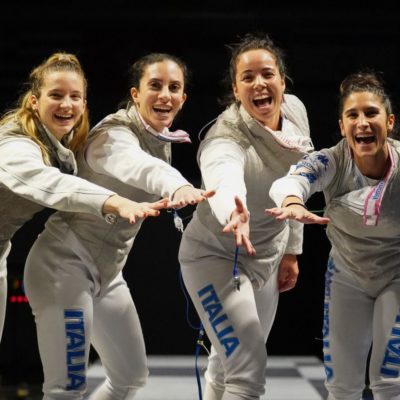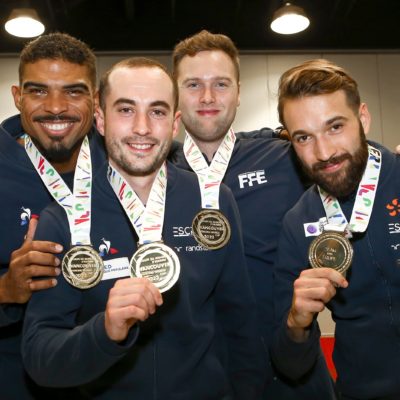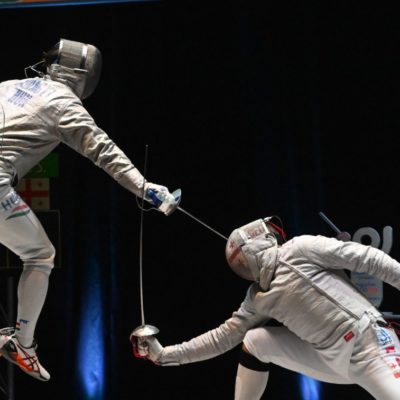American fencing is going through a renaissance. Read all about it!
Saddled by Hollywood with the image of a “rich man’s sport”, fencing has long been the “ballet” of the sports world. An acquired taste with a steep learning curve, fencing was primarily appreciated by fencers themselves. The visceral, intensely competitive nature of this Olympic sport was all but unknown to the general public.
{mosimage}This is all changing, thanks to a resurgence of interest in the sport. A flood of world-class fencing coaches from the old Eastern Bloc countries have trained up a generation of rugged, die-hard American competitors. For once, American fencing finds itself on even footing with the European powerhouses of the world.
American Fencers like Keeth and Emily Smart, Sada and Emily Jacobson, Felicia and Iris Zimmerman are regularly fighting their way up the ranks at International Opens. Elbowing out traditional favorites like France, Italy, Russia and Germany, Americans have started medalling at the highest levels. American audiences, finally, have familiar faces to cheer for — for the first time since American fencing legend Peter Westbrook won a Bronze at the Los Angeles 1984 Olympics.
Recently, American Sabre fencer Keeth Smaart achieved the rank of number one in the world point standings, and played king of the global mountain for a full three months. His story was recently broadcast to a nationwide audience on National Public Radio. Fencing is appearing all over popular media — from Regis and Cathy Lee, to car commercials, James Bond flicks, and Loreal advertisements. Most recently, ABC presented a prime-time, in-depth story on the June 2003 New York World Cup, which took place in Manhattan’s Grand Central Station.
{mosimage}An estimated 100,000 fencers (active, recreational and retired) work and train in the United States, of which roughly 20% are members of the internationally accredited United States Fencing Association. American universities boast 82 NCAA fencing teams and 100 NCAA member programs, with an additional 200 intramural teams. There are 500 dedicated fencing clubs (“salles“) in the United States, and 500 more fencing organizations. The American fencing world is growing by more than 10% every year.
Yet prime-time coverage on major television networks is still elusive. This may be a blessing in disguise. Fencers worry about the “Sumo Wrestling” phenomenon, when a random sport gains temporary popularity, and disappears from public view altogether.
{mosimage}Recent improvements in technology make fencing even more flashy and exciting. Wireless fencing does away with the cord that trails behind each fencer. Shatterproof lexan masks are also starting to appear, letting audiences more easily put a face to the fencer.
The next six months leading up to the 2004 Olympics will be exciting indeed!
Photo credits:
- Photo 1 by Evan Whitney. Brown’s Adrian Martin ’06 (right) scores on a nice touch in men’s epee action against Yale.
- Photo 2 by Evan Whitney. (l-r) Brown’s Paul Friedman ’03 seeming asks himself “what was I thinking!” after a touch by Harvard’s Tim Hagamen.
- Photo 3 — Wireless fencing, with lights in the masks.





